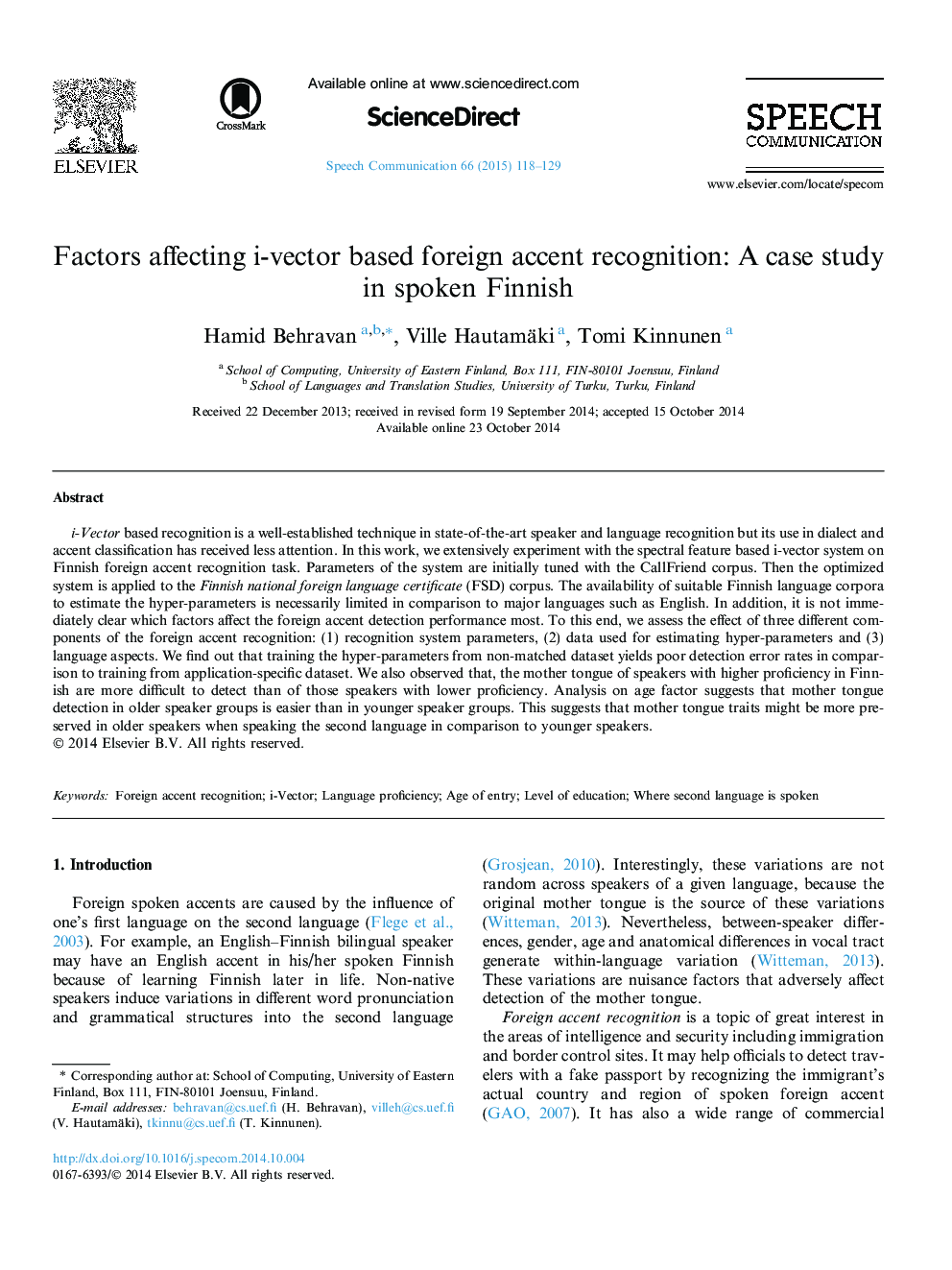| Article ID | Journal | Published Year | Pages | File Type |
|---|---|---|---|---|
| 6961198 | Speech Communication | 2015 | 12 Pages |
Abstract
i-Vector based recognition is a well-established technique in state-of-the-art speaker and language recognition but its use in dialect and accent classification has received less attention. In this work, we extensively experiment with the spectral feature based i-vector system on Finnish foreign accent recognition task. Parameters of the system are initially tuned with the CallFriend corpus. Then the optimized system is applied to the Finnish national foreign language certificate (FSD) corpus. The availability of suitable Finnish language corpora to estimate the hyper-parameters is necessarily limited in comparison to major languages such as English. In addition, it is not immediately clear which factors affect the foreign accent detection performance most. To this end, we assess the effect of three different components of the foreign accent recognition: (1) recognition system parameters, (2) data used for estimating hyper-parameters and (3) language aspects. We find out that training the hyper-parameters from non-matched dataset yields poor detection error rates in comparison to training from application-specific dataset. We also observed that, the mother tongue of speakers with higher proficiency in Finnish are more difficult to detect than of those speakers with lower proficiency. Analysis on age factor suggests that mother tongue detection in older speaker groups is easier than in younger speaker groups. This suggests that mother tongue traits might be more preserved in older speakers when speaking the second language in comparison to younger speakers.
Related Topics
Physical Sciences and Engineering
Computer Science
Signal Processing
Authors
Hamid Behravan, Ville Hautamäki, Tomi Kinnunen,
